The MSI Gaming Booth Tour with dGPUs in AIOs and Notebooks plus Motherboards
by Ian Cutress on June 29, 2015 3:00 PM ESTAll-in-Ones – The AX24 and G24 GE
My view on all-in-ones as compute devices does not seem to align well with what all-in-one manufacturers tell me. Nominally the sole all-in-one that gets much attention online is Apple’s iMac due to the role it has played in Apple’s line-up over the last five or so years. Nonetheless, the all-in-one manufacturers tell me that the PC-behind-a-monitor concept is growing in sales and has sufficient margin and volume to dedicate research and development towards building something customers want. I’ve not seen many AIOs in the wild – most usually in stores as separate stock check/help desks rather than in the home, but Intel has also been pushing the AIO strategy, even to the point of portable all-in-ones (massive 28-inch devices with a battery) in recent keynote speeches in the past couple of years. We’ve covered bits of the AIO market here and there, most often in news or at events such as the first 4K60p AIO at Computex last year, but we have not yet put resources to covering this element of the industry. For companies like MSI, to whom gaming is a focus, it seems that gaming branded all-in-ones are a potential viable market model. As a result, there were a couple of new concepts on display.
The main problem with all-in-ones from a gaming perspective is typically performance and graphics performance – strapping a desktop to the back of a monitor is not always the most space-efficient implementation, especially if you consider heat removal or power delivery. As a result, gaming on integrated graphics, particularly at 1080p or 4K, leaves an element of wanting more (although both Intel and AMD would argue, and our testing suggests, that you can still have a good experience at 1080p with integrated graphics on popular titles). The solution to this starts with equipping the AIO with an MXM graphics card similar to a laptop, which is what the Gaming 24GE 2QE is.
As the name suggests, a 24” IPS panel is paired with a laptop like configuration. The i7 mobile CPU on the HM87 chipset joins forces with a GTX 960M and for the model in front of us, featuring a 1080p display, should provide sufficient horsepower for eSports titles at the highest settings or AAA games at mid-range. I quizzed MSI on a 4K display, and they said that they would react to customer requests in that regard. Other hardware inside includes 16GB of DDR3L-1600, Killer networking and the inclusion of the Nahimic audio software. Storage is provided by dual SSDs in RAID 0 (‘MSI Super RAID’), and the display is a supposed ‘anti-flicker’ screen with an anti-glare finish. MSI’s terminology for this revolves around ‘less blue light’, which is perhaps something similar to the films/transparent glasses designed for at-monitor work to reduce eye-strain. MSI is currently working on the design of their gaming AIOs beyond a simple red-and-black colored livery and an MSI gaming logo.
The GTX960M at the end of the day is still a mid-range mobile component – arguably you could put one or two GTX 980Ms in such a device, much like the GT80 Titan laptop, and it would push some proper pixels. Rather than go down this route, MSI has gone a little mad and actually designed an AIO that supports a full sized graphics card.
On the left hand side we see the extra parts to implement the external graphics:
What we have here is essentially an AIO that loops in a full PCIe 3.0 x16 slot via a riser cable to a GPU mounted on the back of the panel. MSI’s design is not yet final, but they expect to be able to fit almost all reference designs in this bay with a mesh at the front for air intake (supporting blowers and other fan orientations) and a perforated edge to help with air removal:
As you can see, the GPU is mounted a little away from the panel in order to facilitate this around at least three of the edges. The GPU section itself has its own power supply module, requiring a second power brick in order to provide that power. MSI makes power bricks up to 330W, so I would imagine that any single silicon solution (i.e. non-dual GPUs) would work here.
The AX24 is to be designed around Skylake, which given other motherboards we have seen so far we can get multiple M.2 SSDs in PCIe 3.0 mode as part of the package. MSI is also including Killer networking as per usual, and the new Nahimic audio processing software. They were coy about whether the system uses a soldered down CPU or a replaceable CPU though, and at what TDP we might expect it to be. Though they are looking at 4K panels, adaptive sync technology was not mentioned. One of the poignant parts here is that an AIO design is almost like a laptop design, so we might see separate buttons to enable the external GPU, or extra buttons for 100% fan usage when the design is finalized.
MSI also exhibited the Pro 24 2M all-in-one, designed for a more enterprise look and feel. The specifications were pretty much as expected, taking the anti-flicker panel from the G24 but this time using Haswell based processors, integrated graphics, a 1080P 23.6-inch panel with SSD and HDD options.
That doesn’t sound anything great I admit, but there are a couple of non-standard features worth mentioning here. The first is technically an older feature I’ve seen in years gone by to do with webcams – placing a vanity filter via a physical sliding button:
Thus for anyone paranoid about peeping, rather than taping paper over the webcam, here is a physical switch. Alongside this, based on the ‘Pro’ nature of the Pro 24 2M, we get a COM port on the rear:
It’s a bad picture, but to the left of the network port we can see it. The device also comes with USB 3.0 ports, HDMI out, a card reader and gigabit Ethernet.


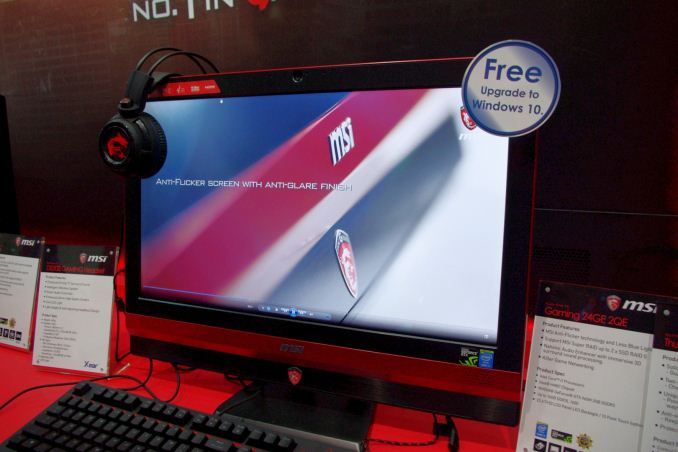

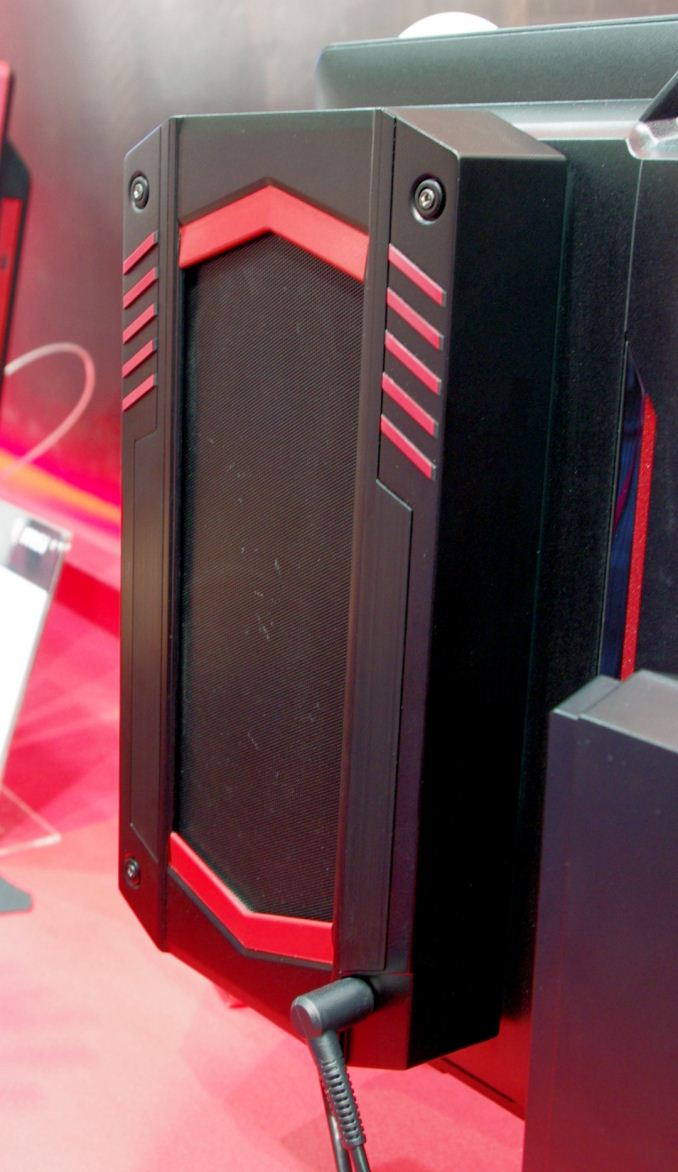


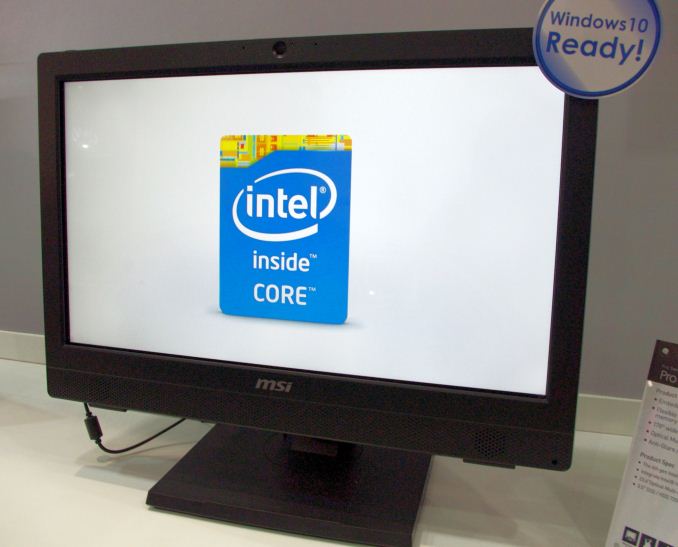
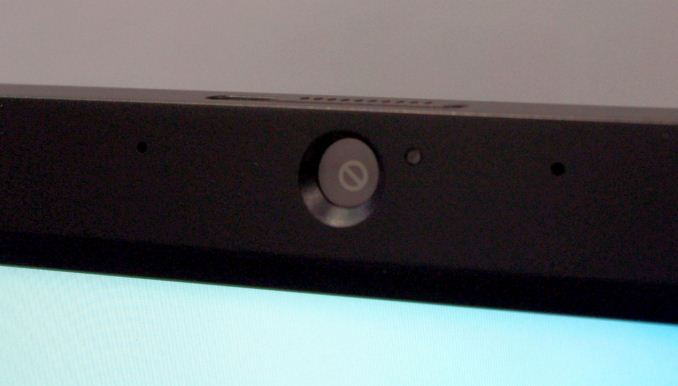
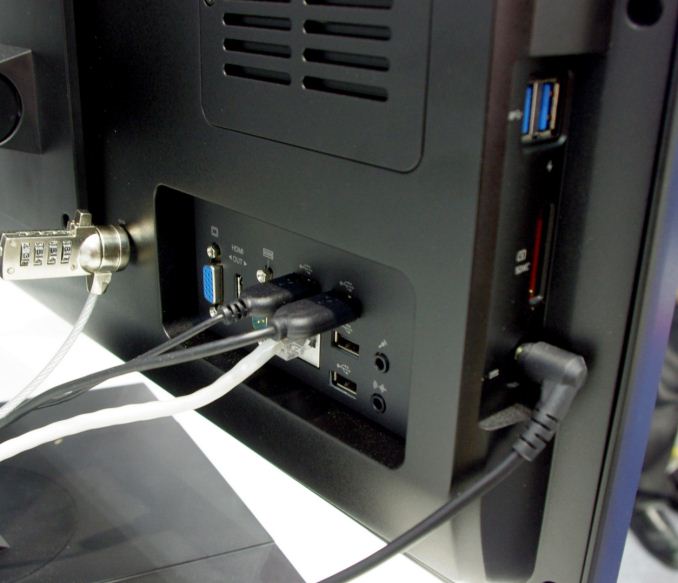
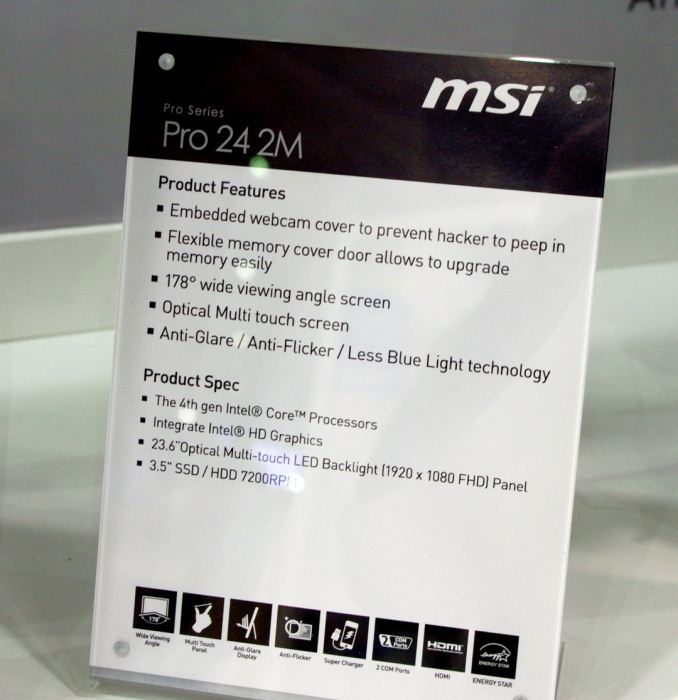








50 Comments
View All Comments
Samus - Monday, June 29, 2015 - link
The site has multiple "writers" but they specialize in certain areas of technology.TheJian - Monday, June 29, 2015 - link
I don't read twitter (and block everything from them...LOL, heck I'd be fired for having an account) and just 4K with some obviously not playable and 95% of us playing other resolutions. Sorry not enough.I get sick and I can't run some benchmarks and write an article for 5 days for a major product launch? Bah. Maybe if I had major surgery and was on morphine drip ;) I hope he has more benchmarks than that as 95% of us run 1440p or less. Since he gives the min for shadow (and avg) I'm assuming the others are avg so I would not want to play much on either card having to turn stuff down, though on 980ti maybe as it adds another 20% from OC that FuryX just can't touch. This is shown in other reviews anyway and I really don't even want to be near 30fps min let alone under it or having to turn stuff down the dev meant for me to see. Between all the other sites you see how many games are really NOT 4K-able.
Considering everyone else had the card for HOURS, pretty impressive Ryan manages to keep it for 5-6 days+ no? Nothing fishy there I guess...So either AMD loves this place or Ryan has magical power no other review site can muster (tomshardware buying their own card to get more time, extremetech, maximumpc, etc etc). Almost every review mentions short time etc. Ran all the benchmarks in one day but writing takes 5? Ok...Not sure I need to read it anyway after the other dozen I already read, but it still makes me LOL. What's the excuse for 300's reviews? Sick for 2 weeks? Open heart surgery? ;) I jest, I jest, honest... :)
D. Lister - Tuesday, June 30, 2015 - link
What is the point of all these "professional" reviews anyway?Almost every site that has reviewed the Fury X, seems content with the conclusion that beloved little AMD has equalled "big bad Nvidia", disregarding the Fury's need for a CLC to come close to an air-cooled gpu, the fact that HBM ended up being little more than a marketing gimmick, incredibly poor OC potential, absence of HDMI 2.0, limited DX12 features, and the 4GB limit on a $650 GPU circa 2015. All that, PLUS the added baggage of all the older issues that brought AMD's financial position to where it is today.
But hey forget all that - let's just celebrate occasional raw frame-rate parity like David equalling Goliath, sidelining the fact that the guy who built Nvidia from ground up is an ex AMD employee, and AMD is small only because it has never been good enough to be big.
chizow - Wednesday, July 1, 2015 - link
Great points, fully agree.chizow - Wednesday, July 1, 2015 - link
Eh, while its disappointing to see no review, still, from Anandtech, I wouldn't go as far as to question Ryan's integrity on matters of health. Hope he gets better, I do believe he was sick for a prolonged period before that caused him to miss a deadline in the past as well. At the end of the day, it is just video cards we are talking about here. :)squngy - Tuesday, June 30, 2015 - link
http://anandtech.com/bench/product/1496?vs=1514fixed the link for you
eriri-el - Monday, June 29, 2015 - link
You guys did get a product with Nahimic in it, but I don't see any "going through the details" kind of thing in the said review. Was looking forward to see what they are bringing to the audio table instead of those useless Creative Software.waldoh - Monday, June 29, 2015 - link
Thanks for the late report on these msi boards. There isn't about 100 youtube videos of tech news reporters who actually give a shit.This site died when Anand left. The management really needs to be fired, its pathetic.
Thank god for the forums, ananadtechs one savior.
waldoh - Monday, June 29, 2015 - link
Also, these pictures look like screen grabs, so not even original content.Ian Cutress - Tuesday, June 30, 2015 - link
Certainly not screen grabs. If the exif data has been retained, it'll show my name and the Pentax I used to take the images.Ananadtech ? Steve, is that you?